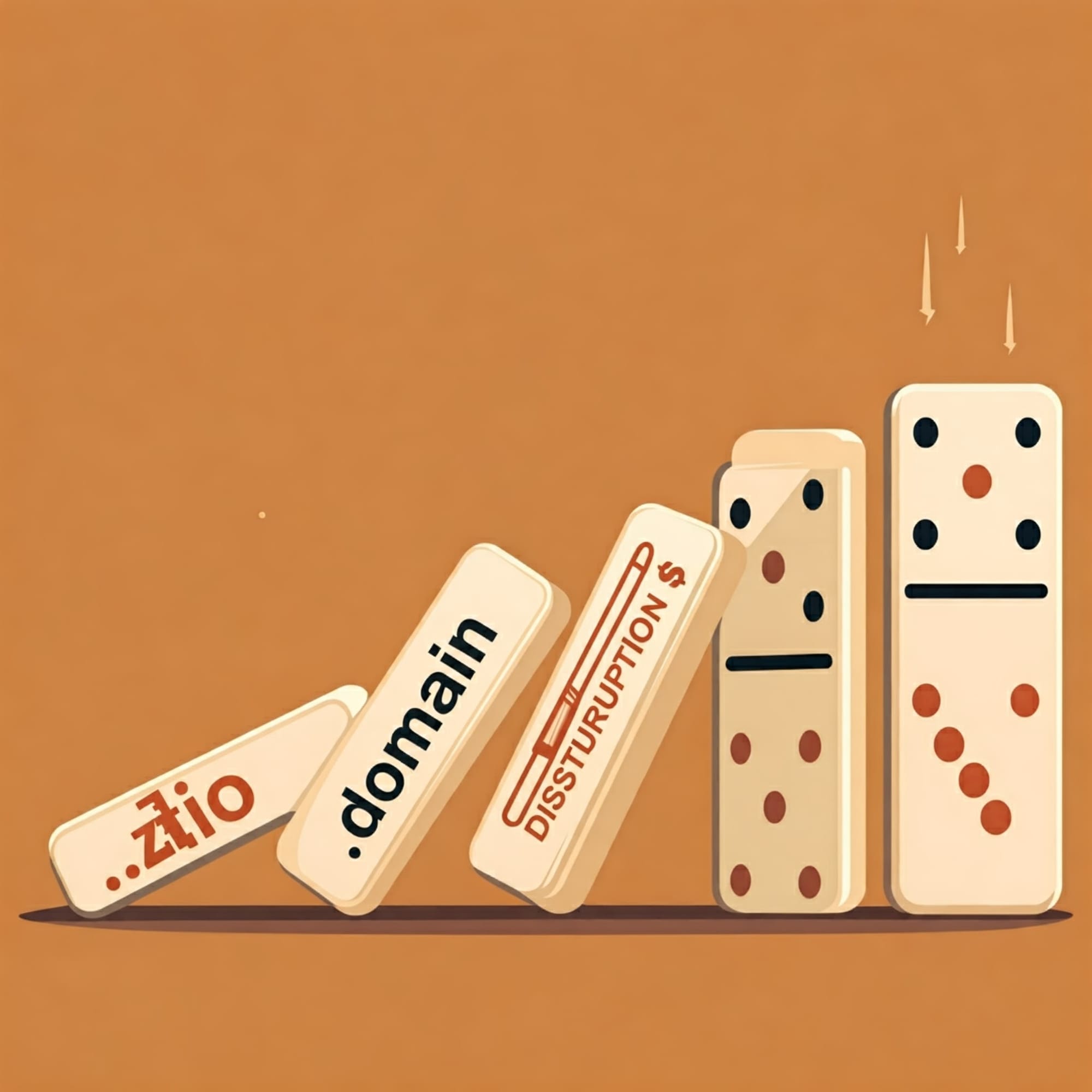The Ripple Effect: .io Domain Disappearance and Its Impact on the Tech Industry
The .io domain has been a favorite for tech startups, but its potential disappearance is sending ripples through the industry. Discover the reasons behind this change and how it might affect your favorite tech companies and the future of online businesses.

The .io TLD, originally assigned to the British Indian Ocean Territory, has become a favorite among tech startups and AI companies due to its association with "input/output" in computer science. Its popularity grew organically, with notable adopters like GitHub (github.io) and Google's developer conference (Google I/O) cementing its status in the tech lexicon.
Root Cause: Geopolitical Shift
The potential disappearance of the .io top-level domain (TLD) is rooted in a significant geopolitical development:
- Chagos Islands Sovereignty: The British government has decided to transfer sovereignty of the Chagos Islands (officially known as the British Indian Ocean Territory) to Mauritius.
- Historical Dispute: Mauritius has long claimed that the UK illegally retained control of these islands when Mauritius gained independence in 1968.
- Resolution: After more than 50 years of dispute, the UK has agreed to hand over the islands to Mauritius in exchange for a 99-year lease for a military base.
Key Facts and Timeline
- Announcement Date: The British government announced this decision on October 3, 2024.
- Domain Origin: The .io TLD was assigned to the British Indian Ocean Territory in 1997.
- Transition Period: The treaty has been signed, there will likely be a 3-5 year transition period before the .io domain is potentially retired.
- Domain Popularity: As of 2024, there were over millions of registered .io domains, showing significant adoption in the tech industry.
- Economic Impact: The .io domain generates millions in revenue annually, with domain registrations costing around $90 per year.
Technical and Administrative Process
- ISO Code Removal: The International Organization for Standardization (ISO) will remove the country code "IO" from its specification.
- IANA Action: The Internet Assigned Numbers Authority (IANA), which manages top-level domains, uses the ISO specification to determine valid country code top-level domains (ccTLDs).
- Domain Freeze: Once "IO" is removed from the ISO list, IANA will likely freeze new .io domain registrations.
- Retirement Process: IANA will initiate the process of retiring existing .io domains, following established procedures for ccTLD retirement.
Historical Precedents
- Yugoslavia (.yu): After the breakup of Yugoslavia, the .yu domain faced similar challenges. It took until 2010 for the domain to be fully phased out.
- Soviet Union (.su): Despite the dissolution of the Soviet Union in 1991, the .su domain still exists today, showcasing the complex nature of retiring ccTLDs.
Potential Consequences
- Branding Disruption: Many AI and tech startups have built their brand identity around .io domains. A forced transition could lead to significant marketing and branding challenges.
- SEO Setbacks: Companies may face temporary drops in search engine rankings as they transition to new domains, potentially impacting visibility and user acquisition.
- Infrastructure Overhaul: Businesses relying on .io domains for internal tools or APIs may need to undertake extensive infrastructure updates.
- Trust and Security Concerns: The transition period could be exploited by bad actors, potentially leading to phishing attempts or domain squatting issues.
Broader Implications for the Tech Industry
- Reassessment of TLD Strategies: This event may prompt companies to diversify their domain portfolios or lean towards more established TLDs like .com or .ai.
- Increased Due Diligence: Startups and investors may place greater emphasis on the geopolitical stability of TLDs when making domain choices.
- Rise of Alternative Tech Domains: We might see increased adoption of other tech-oriented TLDs like .dev, .tech, or .ai as companies seek new digital homes.
- Policy Discussions: This situation could spark debates about the governance of the global domain name system and the role of national interests in digital infrastructure.
Looking Ahead
While the fate of .io remains uncertain, this situation underscores the complex interplay between digital assets and real-world geopolitics. As the tech industry navigates this potential transition, it may lead to innovations in domain management, digital branding strategies, and perhaps even new approaches to online identity that are less reliant on traditional domain structures.
The tech community's response to this challenge will likely shape future discussions on digital sovereignty, the resilience of online ecosystems, and the need for more stable, globally-oriented naming conventions in our increasingly interconnected digital world.
Potential Mitigating Factors
- Economic Considerations: Given the significant economic value of .io domains, there may be efforts to preserve the TLD despite the geopolitical changes.
- Precedent Setting: How this situation is handled could set important precedents for the management of ccTLDs in an increasingly complex geopolitical landscape.
- Tech Industry Advocacy: Given the popularity of .io among tech companies, there might be industry-led initiatives to lobby for the preservation of the domain.
This situation underscores the intricate relationship between digital infrastructure and real-world geopolitics, highlighting the need for the tech industry to remain adaptable and resilient in the face of unexpected changes to the digital landscape.

